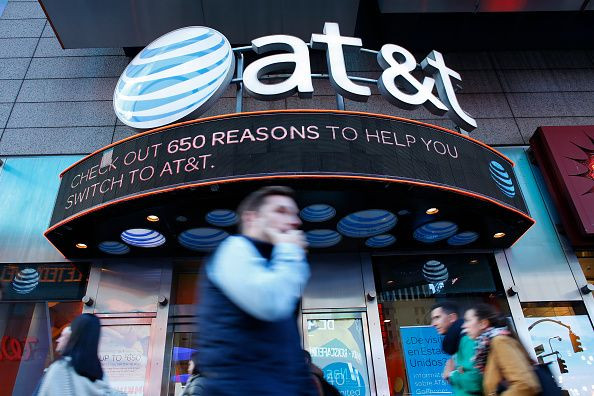AT&T Is Streamlining Its Streaming Strategy

AT&T (NYSE:T) has emerged as one of the most important companies in the streaming space. In addition to its skinny bundle service DirecTV Now, AT&T has gained a serious new influx of streaming muscle in its acquisition of Time Warner. It now has the Netflix competitor HBO and a host of smaller on-demand subscription streaming services.
This article originally appeared in the Motley Fool.
About those smaller ones, though: AT&T has begun to shut them down. That's not a reason to panic over its larger streaming strategy, though. In fact, it may be a reason to believe in the company's long-term position as a streaming giant.
WarnerMedia and niche streaming services
Before the merger, Time Warner primarily competed with Netflix and the rest of the streaming giants through its HBO premium channel and streaming services like HBO Go and HBO Now. But under subsidiary WarnerMedia (in which HBO is also housed), Time Warner also tried its luck in the less-proven niche streaming market.
Niche streaming services had a moment in the sun a couple of years ago, when smaller services -- featuring just one genre or targeting certain demographics or fan bases -- began to pop up regularly. AMC Networks (NASDAQ:AMCX) debuted Shudder, an all-horror service, in 2015. Comcast's (NASDAQ:CMCSA) NBCUniversal released Seeso, an all-comedy service, in 2016.
For its part, WarnerMedia launched the just-for-cinephiles FilmStruck in 2016, acquired Korean drama-focused DramaFever in 2016, and bought anime-centered Crunchyroll in 2018. Of those, only Crunchyroll is still with us; AT&T shut the rest down in a whirlwind week of streaming-service streamlining.
Niche services need help to reach audiences
As major streaming services thrived, niche services failed to capture the same kinds of audiences or the same kinds of profits. NBCUniversal's Seeso shut down in 2017, and its lack of a robust subscriber base was a key reason.
Other niche services have soldiered on. Most have been able to survive by latching on to marketplaces and hubs: CuriosityStream can be added to a Sling TV subscription or subscribed to through Amazon's (NASDAQ:AMZN) Amazon Channels, for instance.
AMC Networks insists that Shudder is doing well, but it, too, relies on hubs: Executives had to field questions from wary investors when a recent spat led to Shudder being removed from Amazon Channels. That Amazon is itself a major player in the streaming market can hardly make companies any more comfortable about relying on it for access to their own streaming audiences.
That's not to say that large streaming services don't want to be on Amazon Channels -- HBO, for instance, is available through that service. But HBO relies far less on Amazon Channels than other streaming services do because it is available through so many other means (including cable and satellite packages, skinny bundle services, and its own streaming app) and has a larger fan base than a niche service would.
In short, niche services are at the mercy of larger marketplaces and hubs, including ones run by other streaming giants like Amazon, in a way that bigger streaming services are not.
Niche services have small margins for error
The idea of an a la carte streaming market was appealing for consumers, but the economics have never looked great for companies. With smaller subscription bases, niche streaming services naturally take in less money. The hubs they rely on to reach much of their audience also take a chunk of that away. Yet niche services still have to spend big on content and choose wisely -- in fact, it's only likely to be more important. A niche audience is looking for specific content that addresses their needs.
Such streamers have tried producing original content, but the average person would be hard-pressed to name the most successful original series from a niche service. None are winning Emmys like HBO and Netflix do. That makes sense: HBO and Netflix have big budgets and big audiences. Niche streamers offer smaller audiences something they already know they want, and that means (often pricey) licensed content.
Because niche players rely on smaller numbers of subscribers, they need to use their smaller budgets to get content that attracts and retains fans with picky or unique tastes; they are not well positioned to replicate the original-content strategies used by companies like Netflix.
In short, this is more bad news for niche services. AT&T has reacted strongly -- and correctly -- to these realities.
That's a good sign. So is AT&T's focus on the opposite sort of streaming service: the comprehensive, all-genre SVOD sort that Netflix pioneered all those years ago. AT&T owns HBO and is currently planning a new streaming service under its WarnerMedia brand. The new service, fueled by HBO original content, will be bigger and pricier than AT&T's old niche bets.
AT&T's strategy is a good one
Following its acquisition of Time Warner, AT&T has shuttered DramaFever and (much to the dismay of its small but loyal fan base) FilmStruck. It has also killed off comedy-focused media company Super Deluxe, which at times operated like a niche service and at other times was used to create content for other Time Warner properties.
That's a wise move. Niche streaming services are vulnerable companies that offer limited upside to a corporation as large as AT&T. And a more streamlined streaming strategy with a focus on being a major player gives AT&T its best chance of a lean and profit-minded streaming business.
John Mackey, CEO of Whole Foods Market, an Amazon subsidiary, is a member of The Motley Fool's board of directors. Stephen Lovely owns shares of Amazon, AT&T, and Netflix. The Motley Fool owns shares of and recommends Amazon and Netflix. The Motley Fool recommends AMC Networks and Comcast. The Motley Fool has a disclosure policy.





















